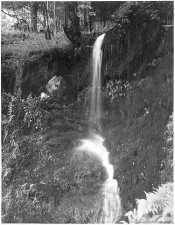David H. Bebbington
Member
Welcome to my world!
Photographing in the redwoods usually means exposures of 15 seconds to 30 minutes. One's hair on arms and legs (I usually wear shorts) become hypersenstitive wind meters!
Mid-day, as the down slope winds reverse themselves and become up canyon winds, one can often sneak in a photo or two during the stillness of the change.
Vaughn
There is probably a worthwhile technical point here - if you are shooting with a reasonable 210 lens on 4x5" and applying enough (forward) front tilt to get front to back sharpness, there is actually no need to close down further than f11 or so - in fact, you would probably get a respectable result at full aperture (assuming this is f5.6) or f8. This would arguablly represent an acceptable trade-off against the risk of wind blur with longer exposures!
Regards,
David




